Original Research: Discussing our results on the parasitological Assessment of Green Leafy Vegetables Sold in a state in North Central West Africa - 2
Welcome back to the sequel article to the first part I shared this week. In the first part of the research publication I shared earlier, I basically discussed the major parasites that we isolated and also discussed their life cycle. It was really something worth doing so that as a reader, you will have a basic understanding of these parasitic worms and how they negatively impact humans.
In today's discussion, I will go further to explain more about the importance of washing vegetables properly, even though a total ban on the use of night soil remains the best approach besides the lovely proposition made by @scienceblocks in the first part of this article (you can find it in the comment section). We will also look at the research methodology (to some extent), and our findings, discuss the results and then end with a final conclusion and recommendations.
For you to be on the same frequency with this discussion, I will strongly advise you to read this post - Original Research : Parasitological Assessment of Green Leafy Vegetables Sold at Masaka and Karu Markets in Nasarawa State of Nigeria -1. In the meantime, let establish a baseline here.
This work was mainly designed to detect the human intestinal parasites that improperly washed vegetables contain and the ways in which they could be controlled. It is interesting to know that more and more people are concerned these days about the presence of parasites of medical importance in fresh vegetables based on the questions I was asked when the first part of the research work was shared.
The importance of hygiene cannot be overemphasized, especially when it concerns what we eat and consume on daily basis as humans. Our body system is quite different from those of animals, in the sense that, an animal can feed from the gutter and contaminated water and still not fall ill, unlike with humans. Not all diseases and infections that affect us as humans affect them. Even though it may, the severity is not measurable when it affects humans.
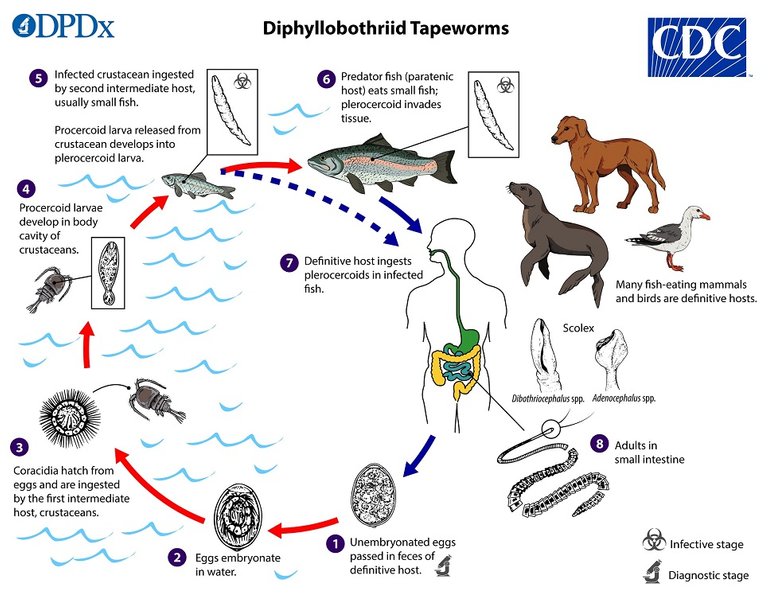
Life cycle of Diphyllobothrium latum
Some of these animals are even reservoirs or intermediate hosts for these parasitic worms. We get infected when we consume animals that house any of the crucial stages of the parasites. For example, Diphyllobothrium latum also known as fish tapeworm is gotten from eating undercooked fish. In this case, those engaged in fishing activities are at greater risk of being infected by this parasite if water sewage is contaminated with human excreta infected with the eggs of the parasitic worm.
The above explanation answers the question I was asked by @lemouth regarding the association of fishing with worm infection. Aside from this, the infective stage of Schistosoma spp - cercariae which are highly motile swims in water and can penetrate the skin of fishermen in the water. In this water, they also get infected.
Can we really as humans do away with vegetables?
Without any reasonable doubt, research studies have shown that drinking water is an important vehicle for the transmission of parasitic worms in underdeveloped cities when there is a breakdown in water purification or cross-contamination between sewage and drinking water pipes besides food consumption. Foodborne transmission is often due to handlers and also occurs when produce is freshened or crops are irrigated with contaminated water which in short term leads to diseases and in long term can lead to massive deterioration of health.
As humans, it might be very difficult to part with vegetables. Virtually all that we eat in one way or the other contains vegetables. By definition, vegetables are all edible plants, including flowers, fruits, stems, leaves, roots, and seeds. They contain fats and are low in calories but contain good amounts of minerals. All green vegetables are rich sources of fiber, calcium, magnesium, potassium, iron, beta-carotene, vitamin B-complex, vitamin C, vitamin A, and vitamin K.
They play a very important role in helping us as humans prevent oxidative stress because they naturally contain a high concentration of antioxidants that mop up oxidative radicals that are responsible for quick cell aging. This resultant effect of the action of vegetables as it relates to antioxidant function is that the body's immune system is energized to fight off infection and cancer development.
How do we identify fecally contaminated environment
Identification of an environment that has been polluted with human excreta can be pretty simple due to the presence of some very important indicator organisms around the environment. Some fecal coliform and streptococcus bacteria when present in water usually give a clear indication of the presence of human excreta in such water. These bacteria are found in human guts and released during defecation. They are can persist very long in the environment thus, making them a good indicator in accessing fecal contamination.
Besides the above indicators, some more reliable indicator organisms of faecal pollution are coliphageya, Clostridium per fringes and bitido bacteria. They are present in greater numbers than any pathogen and in addition very resistant to environmental stress. As a result of this difficulty, for direct search for pathogens in water, microbiologist have been able to develop a very simple and rapid test for the detection of normal intestinal organism known as faecal indicator organisms, which account for the highest source of pollution especially in developing countries like Nigeria.
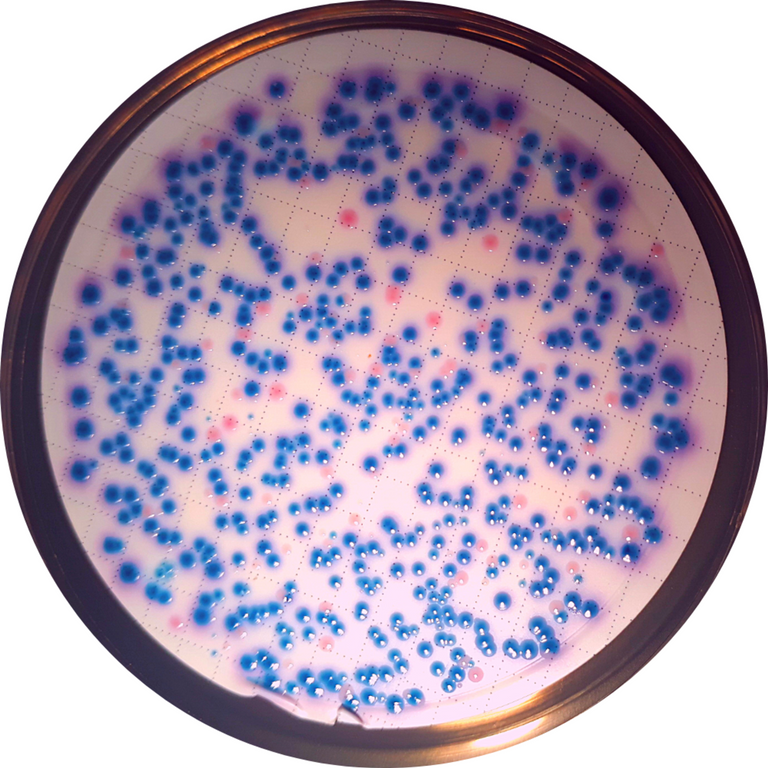
Coliforms of CCA agar (pink: Citrobacter freundii, blue: Escherichia coli)
The organisms that have so far been used as indicators are Escherichia. Coli, Enterococcus faecal, Salmonella Species, Bifid bacteria, Vibrio Cholerae. Regardless, the most widely used remains the coliforms bacteria. Human excreta can get to any part of the environment, be it water or land. If on land, they could infect the crops while if in water or swamps, fishes and some plants that require swampy areas for growth could still be contaminated if the water is contaminated with parasites.
How did we carry out the research?
The research methodology was not so complicated but required expertise and good mastery of microscopy in order to be able to accurately identify the parasites isolated.
Fifty samples of green leafy vegetables were collected which included as Fluted pumpkin leaf (Telfairia occidentallis), Water leaf (Hydrophyllum triangulare), Lettuce (Lactuca sativa), Spinach (Amaranthus hybridus), Garden egg leaf (Solanum aethiopicum), False cubeb leaf (Piper guineense), Curry leaf (Murraya koenigii), Sorrel leaf (Rumex acetosa), Cabbage (Brassica oleracea var. capitata) and Scent leaf (Ocimun gratissimum) were purchased from Masaka market twice a week for a period of two weeks.
In total, 200 sample were collected. Upon collection, each sample was placed in a separate zip-lock bag which had been properly labeled after which it was transported to the microbiology laboratory of Bingham university, K` Karu, Nasarawa state, where it would be assessed parasitological in the time range of 24 hours. The time range was a very important factor to be considered, so that we are able reduce the chances of seeing any dead parasite.
100g of the vegetable sample was weighed and washed separately for two minutes in beakers containing 250ml of distilled water and normal saline (0.90% NaCl) each for detaching the parasitic stages (ova, larva, cysts, and oocysts) commonly assumed to be associated with vegetable contamination. Water was never used so that we are able to maintain homeostasis and friendly environment for the organisms to survive. Using normal water may cause cell rupture in these organisms, since it is hypotonic.
Samples were washed vigorously by shaking and vegetables were removed and discarded into waste bins. 10ml of the washed sample was sieved using fine gauze into 10ml centrifuge tube and centrifuged at 3000rpm for five minutes using a centrifuge. Supernatant was decanted and sediment were stained with lugol’s iodine and examined under light microscope under 10x and x40. Note, you stain with lugol's iodine to enhance visualization of cysts or oocyst of these parasites. Adding the iodine makes the eggs appear brown so that they are easily seen under the microscope.
The data analysis was carried out by Chi square test to find out the association between the parasites present in green leafy vegetables and type of parasites and to check the significance between the type of contaminated parasite and type of green leafy vegetables.
Our Results and findings
Table 1: Parasites present and Poly-parasites contamination of Green leafy vegetables
This section shows the parasites present and the poly-parasite contamination with Fluted pumpkin leaf and Garden egg leaf having the same poly-parasite contamination.

Keys; F1- Fluted pumpkin leaf, W- Waterleaf, S1- Scent leaf, L- Lettuce, S2-Spinach, F2-False cubeb leaf, C1-Cabbage, S3-Sorrel leaf, C2-Curry leaf, G-Garden egg leaf. + = Present; - = Absent
Table 2: Distribution of intestinal parasites in green leafy vegetables sold at Masaka market

This section shows Hookworm (34.5%) as the highest amount of parasites present in the sample analysed followed by Taenia spp (31.69%), Entameoba histolytica (15.49), Trichuris trichura (9.86%) and Ascaris lumbriocoides (8.45%) with the least amount of parasite.
Table 3: Prevalence of parasites assessed in green leafy vegetables at Masaka market
This section shows the number of samples contaminated and the percentage of each parasite present in various samples with false cubeb leaf having the highest positive contamination with 100% and scent leaf having the lowest with 40%.
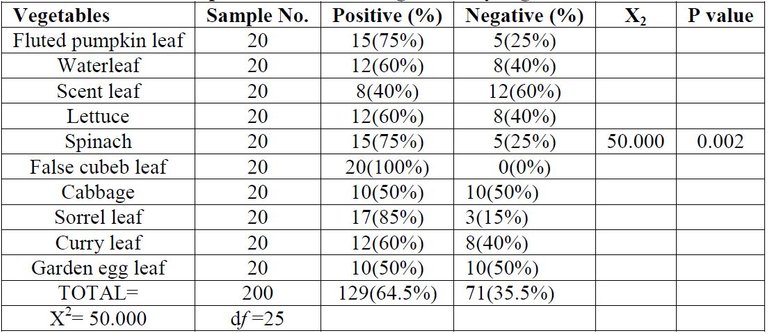
P-value=0.002; the result is significant at p>0.00
Table 4: Type of parasitic contamination according to type of vegetable
This sections shows the type of parasitic contamination according to type of vegetable; with fluted pumpkin leaf being the highest with a total of 23 parasites present and scent leaf being the lowest with a total of 8 parasites present.

Key: H- Hookworm; T1- Trichuris trichura; T2- Taenia spp.; E- Entameoba histolytica;
A- Ascaris lumbricoides.
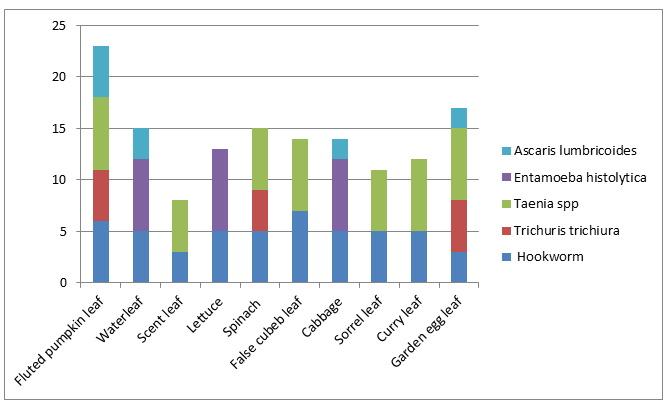
Figure 1: Bar chart showing type of parasitic contamination according to type of vegetables
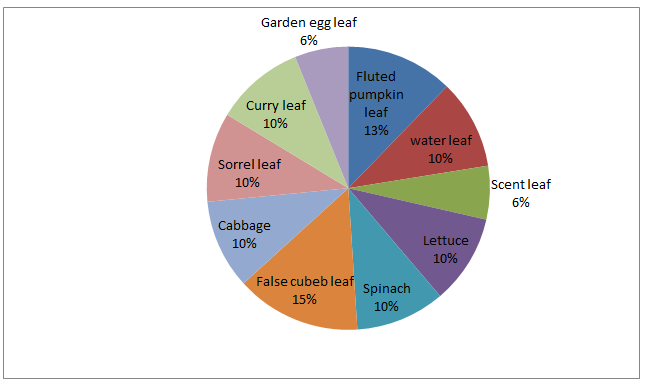
Figure 2: Pie chart showing Prevalence rate of Hookworm in vegetables sold at masaka market
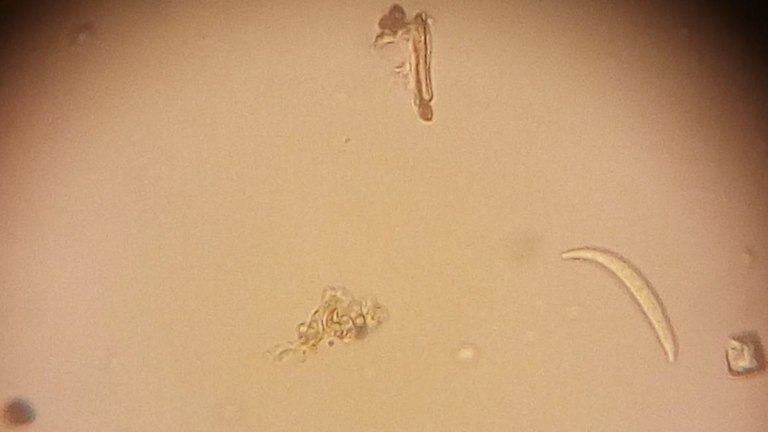
Larvae of Hookworm

Figure 3: Pie chart showing Prevalence rate of Trichuris trichura in vegetables sold at masaka market
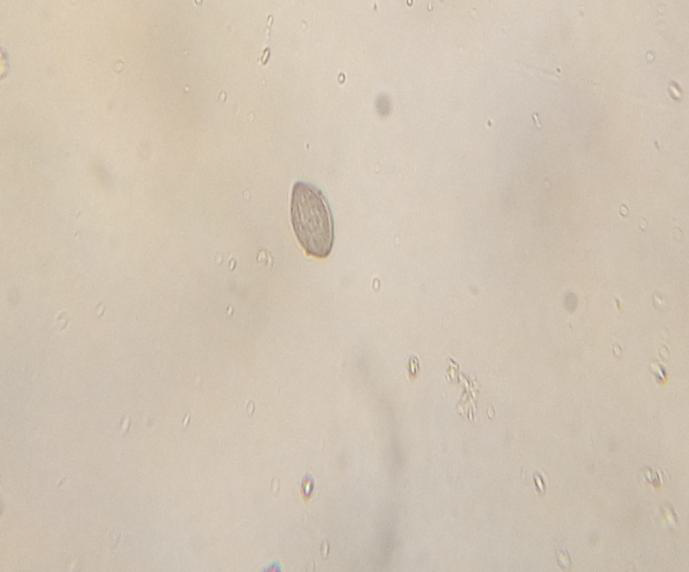
Ova of Trichuris trichura
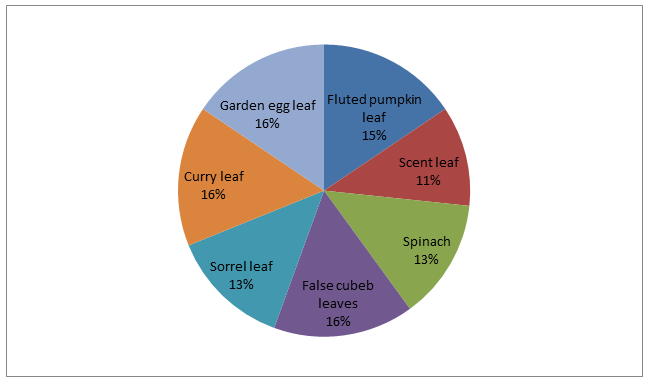
Figure 4: Pie chart showing Prevalence rate of Taenia spp. in vegetables sold at masaka market
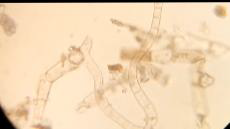
Taenia spp
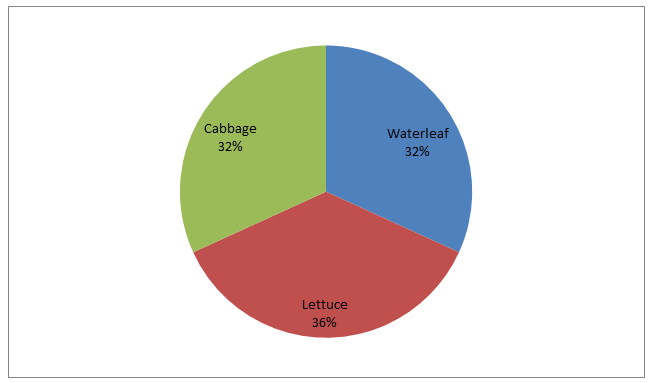
Figure 5: Pie chart showing Prevalence rate of Entameoba histolytica in vegetables sold at masaka market
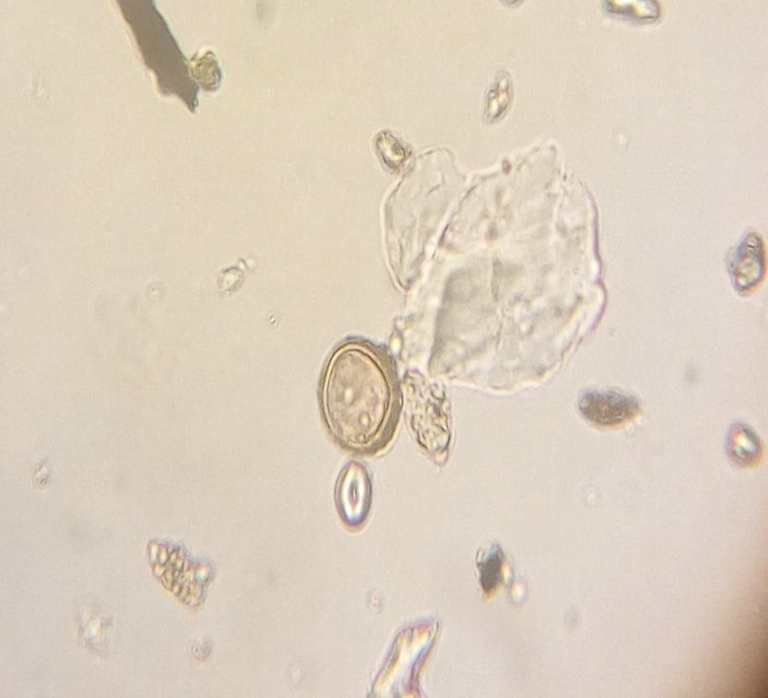
Ova of Entameoba histolytica
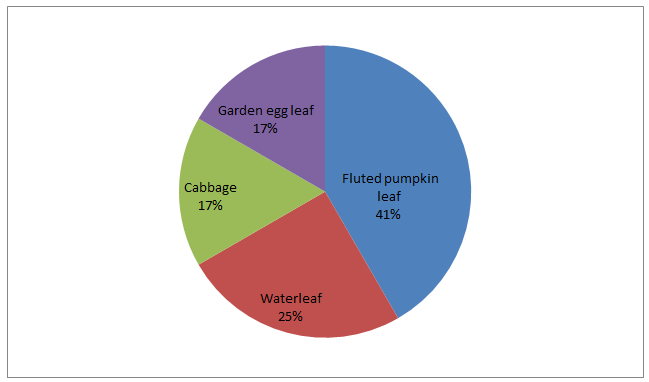
Figure 6: Pie chart showing Prevalence of Ascaris lumbricoides present in vegetables sold at masaka market
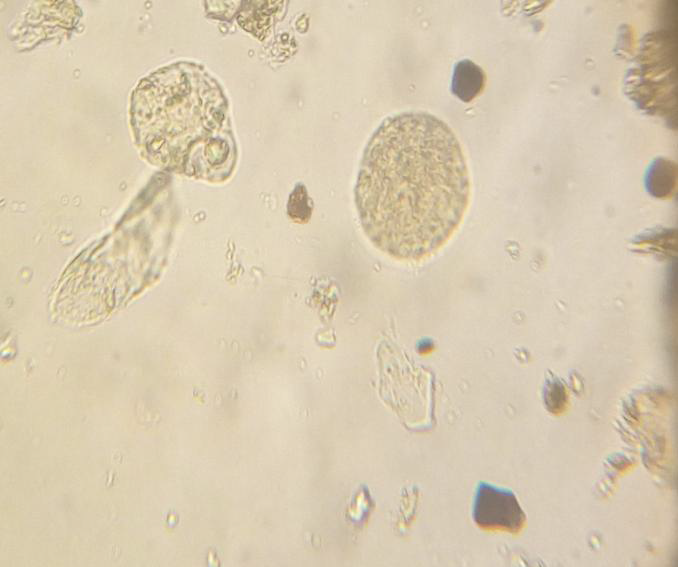
Ova of Ascaris lumbricoides
Let's critically discuss our results
This study showed a considerably high level of intestinal parasites contamination of Green leafy vegetables sold at Masaka market, Karu, Of the 200 samples of green leafy vegetables that were collected, processed and examined, 127 of them were contaminated with parasites and the overall prevalence of parasitic contamination was 64.5%. Contamination may have resulted from contaminated manure, manure compost, sewage sludge, irrigation water, runoff water from livestock operations or directly from wild and domestic animals.
These potential contamination events are all plausible and consistent with the assumption that the level of contamination must have been high. The overall prevalence of 64.5 % recorded in this study is higher than 36% recorded in Jos, Plateau state by Damen et al., (2007), 20% Akyala et al., (2013) in Alhamis Lafia Nasarawa State, 14% by Umoh et al. (2001) in Kaduna and Zaria, 33% by Oranusi et al., (2012) in Owerri, Imo State and 11% in Zamfara by Shehu and Amina, (2014), all in Nigeria.
The prevalence was also higher than 20.1% by Takayanagui et al., (2002) in Brazil, 29% by Uga et al., (2009) in Vietnam and 31.7% by Doaa and Said (2012) on green vegetables foodstuff in Alexandria, Egypt. However, prevalence of the present study was lower than 65.8% by Amaechi et al., (2011) in Owerri.
However, the result was comparable to 64% recorded by Kenneth and Nsima (2002), in Uyo, Akwa Ibom. Differences could have arisen from several factors which may include, geographical location, type and number of samples examined, methods used for detection of the intestinal parasites, type of water used for and post-harvesting handling methods of such vegetables which are different from country to another.

P-value=0.002; the result is significant at p>0.00
In table 3, it was made obvious that Fluted pumpkin, false cubeb leaf, sorrel leaf, water leaf, spinach, lettuce and cabbage were more contaminated than curry leaf, scent leaf and Garden egg leaf. Low growth vegetables seem to be more exposed to contamination with parasite stages during high rainfall and floods unlike high growth vegetables.
False cubeb leaf, Cabbage, lettuce and fluted pumpkin are short growth plants. This tendency of growing near the soil and trailing on the soil predispose them to contamination with various types of parasites which normally undergo part of their development in the soil.
The contamination can also come from manure used for cultivation of these vegetables. These low growth vegetables tend to come in contact with applied manure in the soil since they are close to the ground and the manure can be compost or animal manure containing fecal material of animals like poultry, pig, cow and goat.
The higher contamination found in fluted pumpkin and false cubeb leaf may also be attributed to the shape and surface of these vegetables. The leaf folds of green leafy vegetables such as fluted pumpkin, scent leaf and false cubeb leaf have uneven surfaces that make parasitic eggs and cysts attach to the surface more easily, either in the farm or when washed with contaminated water.
They could also retain dirts which may not be easily removed by slight washing and these dirts most times harbor parasite eggs and cysts. This may indicate why contamination is higher in leafy vegetables than root vegetables (Damen et al., 2007). This agrees with the findings of Damen et al., (2007) and Doaa and Said (2012), who recorded highest parasite contamination in leafy vegetables in Jos, Plataeu state, Nigeria and Alexandria, Egypt respectively.
The use of sewage contaminated water for irrigation of vegetables is a common practice in developing countries including Nigeria where Karu is located. The water contaminated with wastes may not be treated before being used for irrigation. Vegetables may not only contaminate in the farm, but also from unclean environment in the markets as well as from vegetable vendors due to their poor sanitary status.
Vendors serve as intermediary between the producer farmers and the final consumers, they play an important role in the distribution chain of fruits and vegetable produces and also on the contamination and distribution of the contaminants. Some vendors display their goods on the road side exposed to dust, flies and other insects. This practice coupled with the handling of the vegetables by different customers during bargain can contribute to contamination of vegetables. Flies like housefly can easily carry parasite eggs and cysts from these dumped refuse in the filthy market premises and surroundings and transfer them mechanically to already displayed vegetables.

Keys; F1- Fluted pumpkin leaf, W- Waterleaf, S1- Scent leaf, L- Lettuce, S2-Spinach, F2-False cubeb leaf, C1-Cabbage, S3-Sorrel leaf, C2-Curry leaf, G-Garden egg leaf. + = Present; - = Absent
In table 1, it was noticed that Fluted pumpkin leaf and garden egg leaf has the same poly-parasite contamination of Hookworm, Teania spp, Trichuris trichura and Ascaris lumbricoides. This can be related to the ability of the parasite to survive for days to months in the environment after being passed out in feaces.
In table 2, Hookworm had the highest occurrence followed by Teania spp, E. histolytica, Trichuris trichura while Ascaris lumbricoides the least. The presence of helminthes eggs in different vegetables is mainly related to contamination of soil rather than contamination of irrigating water.

It must be noted that some of these vegetables are cultivated in the tropics and tropical climate provides a conducive atmosphere for the development of these parasites. Biologically, the highest health risk is found in helminthes infections compared with other pathogens because helminthes persist for longer periods in the environment and the infective dose is small.

P-value=0.002; the result is significant at p>0.00
In table 3, the number of samples contaminated and the percentage of each parasite present in various samples with false cubeb leaf having the highest positive contamination with 100% and scent leaf having the lowest with 40%. Data analysis was carried out by Chi square test the value was gotten to be 50.000 with df of 25.
The P value was gotten to be 0.02 which means the 2 variables are associated with each other, which is less than 0.05 which proved the alternate hypothesis to be accepted, which means that the exact type of parasites present as contaminants of vegetables sold for consumption were determined and the parasitic load of contaminants present were also determined.
In table 4, it was noticed that fluted pumpkin leaf had the highest amount of parasites with a total of 23 parasites while scent leaf had the lowest with a total of 8 parasites present.

Key: H- Hookworm; T1- Trichuris trichura; T2- Taenia spp.; E- Entameoba histolytica;
A- Ascaris lumbricoides.
In conclusion...
The findings of the present study revealed the poor socio-economic condition, as well as poor sanitation practices in our environment. The presence of these parasites in the local vegetables meant for consumption might be due to lack of modern toilet facilities, inadequate public health enlightenment and ignorance that make people defecate indiscriminately resulting in pollution of water and farmland. There is dire need for the improvement of sanitary facilities in our markets and among vegetable vendors.
There should be proper treatment of wastewater used for irrigation of vegetables, enlightenment campaign, environmental and friendly policies by government, sanitation laws; therefore, local market water and environment authorities have major roles to play. Researches should be done on edible vegetables sold in other markets of Nigeria to ascertain the hygienic status of the vegetables the citizens consume on daily basis. Combination of these results will help in policy making on good sanitary system that will govern the environment.
With increasing urban population, and the awareness of the nutritional content and importance of Green leafy vegetables, the following measures are recommended;
- Practical, simple and inexpensive methods of improving the microbial quality of irrigation water at the farm level should be developed or an alternative source of water be provided for irrigation.
- Farmers should be encouraged to use Personal Protective Equipment such as gloves, boots, trousers and long sleeve shirts during farm work to reduce the level of exposure.
- Education on the right methods for vegetable washing especially at the point of consumption should be increased by the Ministry of health.
- Vendors of these vegetables should ensure proper hygiene in handling and sale of these vegetables to reduce levels of contamination and exposure
- Public awareness on effects of consumption of vegetables contaminated with these parasites should be done in other to educate the public on the health risks involved.
If you read up till the moment, you are indeed a great reader. Thanks for the read.
References
Detection of Human-Derived Fecal Pollution in Environmental Waters by Use of a PCR-Based Human Polyomavirus Assay
A simple field test for the detection of faecal pollution in drinking water
For detailed information and references, you can access the Original Article on my research gate profile HERE

Congratulations!
✅ Good job. Your post has been appreciated and has received support from CHESS BROTHERS ♔ 💪
♟ We invite you to use our hashtag #chessbrothers and learn more about us.
♟♟ You can also reach us on our Discord server and promote your posts there.
♟♟♟ Consider joining our curation trail so we work as a team and you get rewards automatically.
♞♟ Check out our @chessbrotherspro account to learn about the curation process carried out daily by our team.
Kindly
The CHESS BROTHERS team
💓🙏
The issue of contaminated fruit/vegetables exists everywhere. The food that comes to my dinner table in the U.S. may be imported. It may be picked by someone in the U. S. who does not practice good hygiene. We get alerts often about contaminated produce. Green leafy vegetables are high on the list of products affected.
I'm a little bit paranoid about this (your article makes it worse😄). Whenever I buy berries for my family, for example, I scrub each berry. This does not work out well for soft fruit, such as raspberries.😅
Your articles are always valuable. Thank you!
Haha, it's nothing much to worry about as long as you deworm Atmost twice a year and also be intentional about the hygiene state of the vegetable you are buying.
The orientation of the seller about the need for keeping vegetables clean and free from contamination also matters.
Thanks so much ma for the compliment as always 💓
Thanks for your contribution to the STEMsocial community. Feel free to join us on discord to get to know the rest of us!
Please consider delegating to the @stemsocial account (85% of the curation rewards are returned).
Thanks for including @stemsocial as a beneficiary, which gives you stronger support.
💓
https://twitter.com/cyprianzz/status/1568554961985830913
The rewards earned on this comment will go directly to the people( @cyprianj ) sharing the post on Twitter as long as they are registered with @poshtoken. Sign up at https://hiveposh.com.
Greetings, good content and it is good to know about this topic.
Thanks for the compliment 💓
Congratulations @cyprianj! You have completed the following achievement on the Hive blockchain and have been rewarded with new badge(s):
Your next target is to reach 60000 upvotes.
You can view your badges on your board and compare yourself to others in the Ranking
If you no longer want to receive notifications, reply to this comment with the word
STOPCheck out the last post from @hivebuzz:
Support the HiveBuzz project. Vote for our proposal!
💓
You're welcome @cyprianj! Have a nice day 😊👍🌹